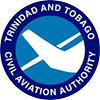Dangerous Goods
What are Dangerous Goods
The thought rarely crosses our minds, but many of the goods we use on a regular basis pose dangers to the aircraft. For example, lithium batteries, dry ice and aerosol whipped cream are dangerous goods.
Common household substances such as oven and drain cleaners, bleach, glues, aerosols and pesticides, petrol and paint can be classified dangerous goods and can’t be taken on board a plane. Other examples of household objects include acids, perfumes, matches, cigarette lighters and camping stoves with liquid fuel or compressed gas, anything that contains or has contained petrol, such as lawn mowers, chainsaws, brush cutters, model aircraft, batteries, and fireworks.
Electrical devices such as laptops, cameras and drones contain batteries which can also be a hazard if packed incorrectly.
These products may seem harmless; however, when transported by air they can be very dangerous. Vibrations, static electricity, and temperature and pressure variations can cause items to leak, generate toxic fumes, start a fire, or even explode if these products are not handled properly.
Dangerous Goods (also known as hazardous materials or hazmat) are any articles or substances that are capable of posing an unreasonable hazard to health, safety, property and environment when transported by air. Identifying Dangerous Goods is the first step to reduce the risks posed by the product with proper packaging, communication, handling, and stowage.

Trinidad and Tobago Civil Aviation Authority
"Provision of a Regulatory Framework to facilitate a Safe, Secure and Effective Aviation Industry and Air Navigation Services within the Piarco Flight Information Region"
- Contact: 669-4302
- Email: ttcaa@caa.gov.tt
- Website: www.caa.gov.tt

Official Business Hours: Administrative and
Regulatory Sections: Mondays – Thursdays: 8:00am to 4:15pm Fridays: 8:00am to 4:00pm
Closed on Weekends, Public Holidays and after business hours. · Air Navigation Services Operations: 24 hour Service every day including Public Holidays.